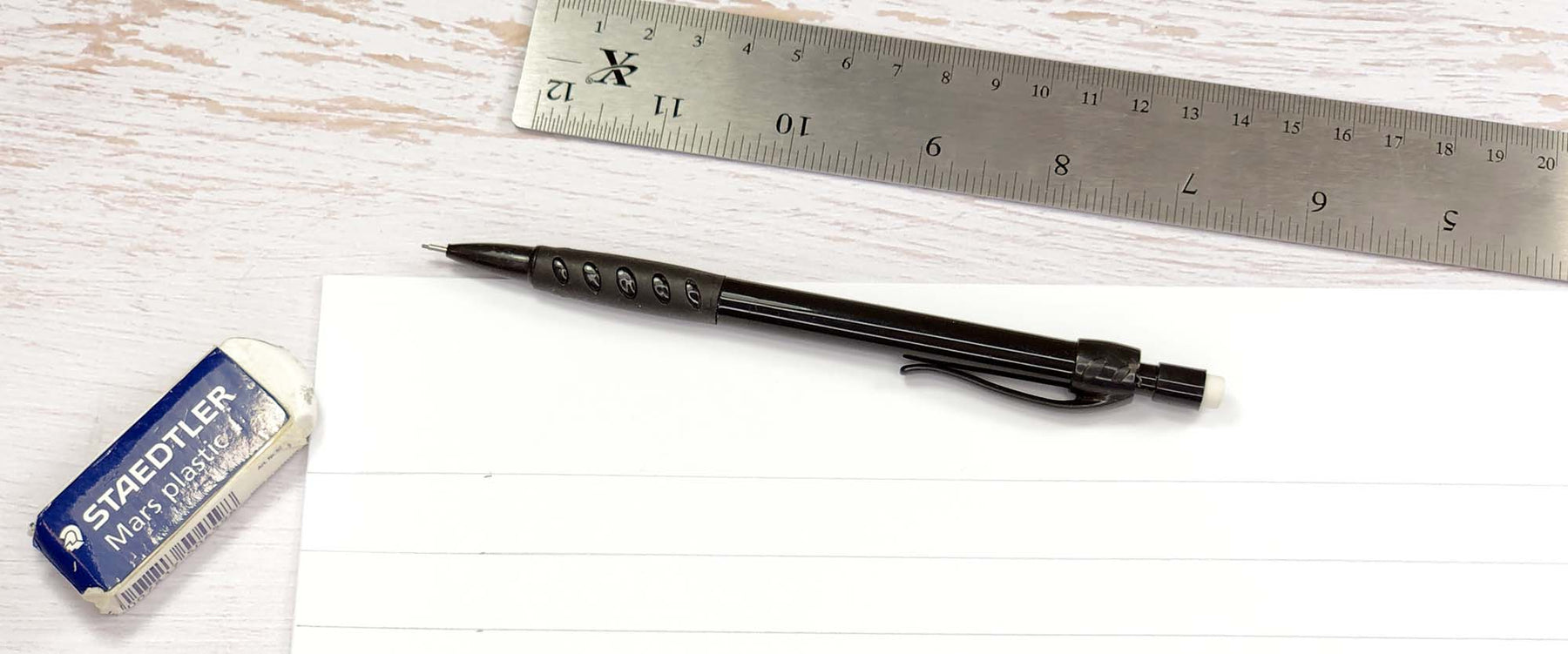
How to Rule-Up
Does anybody like ruling-up?
Not many people do, but these tips will help make light work of this important activity.
Accuracy is most important
Time taken to accurately rule up will save a great deal of frustration later on. Ruling up needs to be accurate and consistent. Calligraphers spend time ruling-up the roughs, only to rule up the final piece inaccurately. This then causes the writing to be slightly smaller or larger and creates a line of text a different length to the rough, which means the text is no longer centred.
Don’t use a blunt pencil to rule-up, especially if it is a small x-height. Blunt pencils cause two problems. Firstly, the marks you make on the paper will be thick – first opportunity for an inaccuracy to occur. Secondly, the lines themselves are thick. With a large x-height you may get away with it but not with a small x-height.
Take time when making the marks on the paper with the nib. Be sure that the marks just touch and do not overlap. Overlapping will create an inaccurate x-height, which could be quite significant if you are using a fine edged nib. It is a good idea to repeat the process of making the marks and measuring so you can get an average x-height.
If you are using William Mitchell or Leonardt Round Hand Nibs then you may find the X-Height Measuring Discs a useful aid. The X-Height Measuring Discs provide an accurate and faster method of ruling up your paper because there is no need to measure awkward distances with a ruler.

Choice of pencils
Some calligraphers use a softer pencil (B or 2B), whilst many calligraphers prefer a harder pencil (4H or harder). Is the grade of the pencil lead important? What really matters is how hard you press the pencil on the paper to produce the guidelines. With a softer pencil you can get away with more pressure than you can using a hard pencil. Too much pressure with a hard pencil will permanently mark the paper even after erasing the pencil lines. A harder pencil will produce a finer line for longer before it needs to be sharpened.
A sharp, soft grade pencil works well. You will need to sharpen the pencil frequently but the lines produced will be easier to erase (as long as you do not press too hard).
Sharp pencil
Use a sharp pencil for ruling up to create finer lines. An alternative to a pencil is a Mechanical or Automatic Pencil. Automatic Pencils which often are referred to as Mechanical Pencils can be purchased in a range of lead thickness from 0.9mm down to a 0.3mm thickness.
Whist drawing the line gently twist the pencil. This will cause an even wear on the lead and help keep it sharper for longer.
Shop our range of Ruling Up equipment here.
